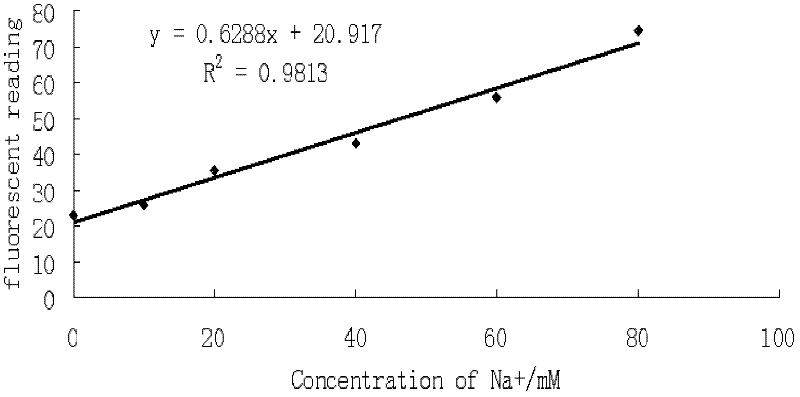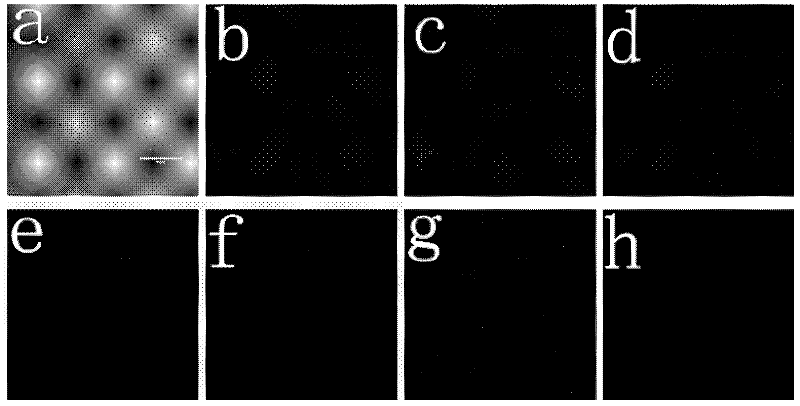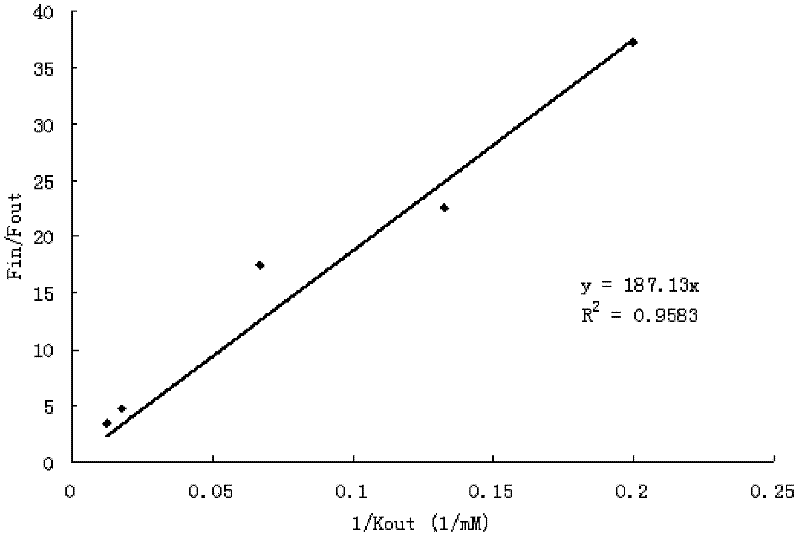Cell potassium electrode property detection method based on Nernst electric potential fluorochrome
A technology of fluorescent dyes and electrode characteristics, applied in the biological field, can solve the problems of inapplicability, inconvenient promotion by ordinary research and development institutions, expensive instruments, etc.
- Summary
- Abstract
- Description
- Claims
- Application Information
AI Technical Summary
Problems solved by technology
Method used
Image
Examples
Embodiment 1
[0040] Example 1 Establishment of a theoretical induction method for evaluating the characteristics of a cell potassium electrode
[0041] A theoretical analysis
[0042] For cells with the properties of a Nernst potassium electrode, the cell resting membrane potential V m The relationship with the concentration of potassium ions is described by the Nernst equation, namely:
[0043] V m = - 2.303 RT zF log [ K + ] i [ K + ] o - - - ( 1 )
[0044] Here R is the ideal gas constant; T is the absolute temperature; Z...
Embodiment 2
[0071] Example 2 Measurement and Evaluation of Cellular Potassium Electrode Characteristics
[0072] 1. Determination of intracellular sodium ion concentration in neural stem cells
[0073] Na in intracellular fluid + Relative content and concentration are low, available Na + Fluorescent dyes are used to measure. Commonly used Na + Fluorescent dyes include SFBI, Sodium Green, etc., and the sodium ion dye used in this example is CoroNa TM Green (Invitrogen, USA. Cat No.: C36676).
[0074] Experimental principle: In this example, after the cells are permeabilized with 18 μM monensin, the sodium ions inside and outside the cells will be balanced. In setting external Na + Under the condition of concentration, the cells are loaded with CoroNa Green, which can measure different Na + The fluorescence intensity corresponding to the concentration was used to make a standard curve. Under the same conditions, use the same concentration of CoroNa Green on Na + staining, the intr...
Embodiment 3
[0142] Example 3 Evaluation of Cellular Potassium Electrode Characteristics by Patch Clamp Technique and Verification of Potential Fluorescent Dye Method
[0143] 1. Materials and Reagents
[0144] Amphotericin B (domestic), trypsin-EDTA (Hyclone, Cat.No.: SH70042.01), the inner and outer solution of the electrode contains K + 135mM HBS (without Na + );
[0145] Instrument: EPC-10 single-channel patch clamp (HEKA Electronic, German) and related accessories
[0146] 2. Test steps
[0147] 1 The cell culture and inoculation methods were the same as in Example 2, digested with 0.125% trypsin-EDTA, observed under an inverted phase-contrast microscope, the cells were raised but not completely rounded, and the trypsin was discarded. with K + Rinse the dish with 5mM HBS and soak the cells. Divide into two groups and carry out test, valinomycin group and normal group (processing method is the same as embodiment 2).
[0148] 2. Pre-absorb 30 μg / ml amphotericin B at the tip of th...
PUM
| Property | Measurement | Unit |
|---|---|---|
| Diameter | aaaaa | aaaaa |
| Channel width | aaaaa | aaaaa |
| Depth | aaaaa | aaaaa |
Abstract
Description
Claims
Application Information
 Login to View More
Login to View More - R&D
- Intellectual Property
- Life Sciences
- Materials
- Tech Scout
- Unparalleled Data Quality
- Higher Quality Content
- 60% Fewer Hallucinations
Browse by: Latest US Patents, China's latest patents, Technical Efficacy Thesaurus, Application Domain, Technology Topic, Popular Technical Reports.
© 2025 PatSnap. All rights reserved.Legal|Privacy policy|Modern Slavery Act Transparency Statement|Sitemap|About US| Contact US: help@patsnap.com



